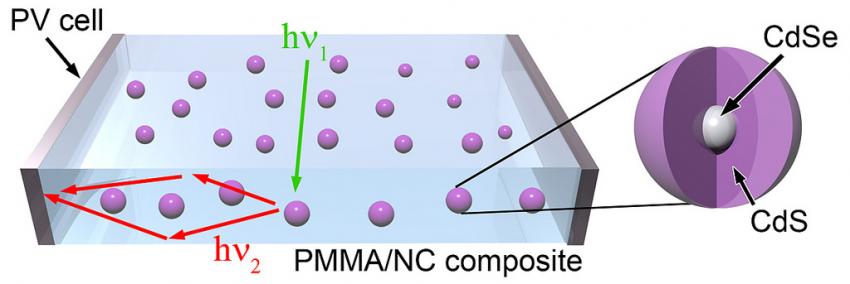
Quantum dots embedded in plastic film can capture sunlight and make windows into cheap solar panels. Credit: Los Alamos National Laboratory
Both ends of solar panel innovation are covered in this and next week’s solar rants readers. These courtesy of heads ups provided by our very own Finn Peacock and SolarQuotes reader and follower Sad Clownfish.
By both ends I mean solar power from the impossibly small to the…well stratospheric.
Let me explain.
The latest breakthrough in solar panel innovation at the inestimably small end of the spectrum has come from the Los Alamos National Laboratory in the United States where quantum dots are the latest big thing (sorry!).
Quantum dots? Sounds a bit nasty? Well your scientifically-challenged correspondent gathers that the key benefit of the nano (read bloody small!) technology will be to fast track the “window as a solar panel” project.
Yes that’s right the quantum dot project will bring the enormous benefit of a window that doubles as a solar panel, just that bit closer. The superior light-emitting properties of the quantum dots will make harvesting solar energy from such platforms as ordinary house windows more efficient.
Not only will this technology provide more motivation to keep those windows clean but will also provide yet another surface for solar power. Already households and factories with an excess of roof space are cashing in on the financial and environmental benefits of solar panels. Will quantum dot solar power innovation grease the wheels for houses and office buildings to add to their solar panel platform?
But here’s the Laboratory’s April 14 press release to explain how the latest quantum dot breakthrough will accelerate that goal.
“The key accomplishment is the demonstration of large-area luminescent solar concentrators that use a new generation of specially engineered quantum dots,” said lead researcher Victor Klimov of the Center for Advanced Solar Photophysics (CASP) at Los Alamos.
The luminescent solar concentrator (LSC to its friends) “…serves as a light-harvesting antenna which concentrates solar radiation collected from a large area onto a much smaller solar cell” Klimov continues, adding that this increases its power output.
Quantum dots are ultra-small bits of semiconductor matter that “can be synthesized with nearly atomic precision” according to the Laboratory’s press release which means the quantum dot breakthrough may be the biggest thing to hit your window since venetian blinds.
Yet another solar panel breakthrough which, combined with the charge down the cost curve of the cost of solar panels, promises to bring a bright (ahem), cheap and environmentally friendly future for both businesses and households. Please add your thoughts on this new technology either here in the comments or over at our Facebook, Google Plus or Twitter Pages.
Next week we’ll bring you solar panel innovation to the other extreme, literally into outer space. The idea’s not a new one, dating back to the ’60s. From the nano to the stratospheric!

 RSS - Posts
RSS - Posts



are they mentioning any time frames for this innovation
Hi Wayne. No time frames were mentioned in the press release, although the move does appear to bring the concept a little closer.